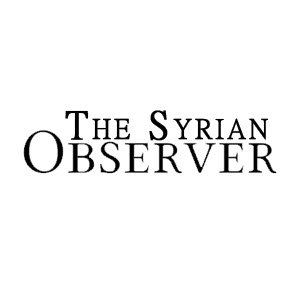In October 1983, Lebanon’s most powerful warlords and leading politicians marched into the ballroom of Geneva’s prestigious Beau Rivage Hotel in an attempt to negotiate an end to the raging civil war. But despite the fact that the Geneva talks and their successors were brokered by regional and international powers, these supposed peace talks seemed to peter out, whether because of the participants’ lack of resolve or due to the absence of an international consensus on stopping the bloodshed. The only serious attempt at peace talks would have to wait until 1989, with the Arab League effort led by the Higher Tripartite Committee and its chief negotiator, Lakhdar Brahimi.
As the Arab League Special Envoy for Lebanon between 1989 and 1991, Brahimi shuttled across the countless demarcation lines that divided Lebanon, negotiated for days at a time with the leaders of the militias who were in control of the different regions of Lebanon, and visited Arab and foreign capitals which continued to hold sway over these competing militias. His efforts paid off in 1989, when he was able to assemble 62 out of 71 surviving Lebanese parliamentarians who had been elected in 1972 in a conference in the Saudi city of Taif. After days of negotiations and discussions, the MPs agreed on the National Reconciliation Accord, known more simply as “Taif.” 23 years later, Brahimi’s 2012 appointment as the UN-Arab League Special Envoy for Syria caused many to wonder whether the veteran diplomat would conclude his illustrious career with a parallel success by ending the conflict in Syria.
It has been argued that there are fundamental differences between the Syrian and Lebanese social, economic, and political systems that render a power-sharing agreement between different religious communities impossible in Syria. First, the argument goes, sectarianism has always had deeper roots in Lebanon, which has historically hosted strong religious, sectarian, and ethnic societies and weak state institutions. The opposite is true in Syria, say these analysts: the country has been ruled uncontested since 1963by the Baath party, which has superseded former traditional cleavages of the kind found in Lebanon.
The second highlighted difference between the 1975-1990 Lebanese Civil War and the current Syrian conflict is the relative position of the state. In the Lebanese war, the state was not the sole faction involved in the fighting: rather, the different communities fought each other, and while the state was seen as siding with the Christians, it did not spearhead their cause. In Syria, however, the regime, with its control over different state institutions, is using all lethal means to attack not only rebel groups but also civilians and constitutes a leading combatant.
The third crucial distinction between the Lebanese and Syrian wars is the demographic composition of sectarian and ethnic groups in each country. In Lebanon, all sectarian and religious groups are considered minorities; however, in Syria, Sunni Muslims constitute almost 80% of the population, with other minorities collectively occupying a mere 20%.
But despite these arguments, the current state of the Syrian war is more comparable to the Lebanese Civil War than is often recognized. Claiming that the Baath regime managed to break down the old tribal, ethnic, and sectarian networks in Syria through state institutions and the expansion of Baath party membership is not entirely accurate. The Baath party under the Assads did not radically change the structure of Syrian society, nor did it truly modernize the country: instead, they only succeeded in centralizing power, imposing a full monopoly over all political activity, and turning pluralism into a suspect. In other words, it established control over the private and public spheres in Syria to better serve the interest of the house of Assad and its clientelist network, but did nothing to address traditional societal fault lines. Today’s sectarian and ethnic divisions in Syria are the fallout from the regime’s diminished ability to control the national discourse following the 2011 protests, leading to the “resurrection” (“baath” in Arabic) of old forms of cleavages and allegiances.
Additionally, the fact that the Sunnis are a clear majority in Syria is not a major obstacle to reaching a power-sharing agreement similar to the Taif Accord of 1989. A power-sharing agreement between communities does not require demographic balance between the communities involved: rather, the main conditions that an agreement needs to satisfy are sensible distribution of constitutional power between different groups and significant protection measures for minorities.
If a Syrian National Reconciliation Agreement – a Syrian Taif, in short – is a possible way out of the conflict, the main lesson that the Syrians should learn from their Lebanese brethren is that a power-sharing agreement should always be seen as a means to end a conflict rather than the end in itself. Many of the roots of Lebanon’s ongoing political crises stem from the fact that the political, economic, and social reform elements of the Taif agreement were not properly implemented. Key measures such as equitable development, administrative decentralization, political reform, and the de-commissioning of all militias and their integration into the Lebanese Army remain unexecuted, underscoring that the mere signing of an agreement is but one step.
Above all, when considering the Geneva II talks, it is also important to bear in mind that Taif was one of many attempts to end the violence in Lebanon. These seemingly futile attempts at peace might not bear immediate fruit, but they may nevertheless pave the way to a final peace. But regardless of what Brahimi and his successors will accomplish, it remains certain that Syria and the rest of the region will never look the same
Khalil Gebara is a Lecturer of Political Science at the American University of Beirut. Makram Rabah is a PhD candidate at Georgetown University’s History Department. He is the author of “A Campus at War: Student Politics at the American University of Beirut, 1967–1975.”
......


